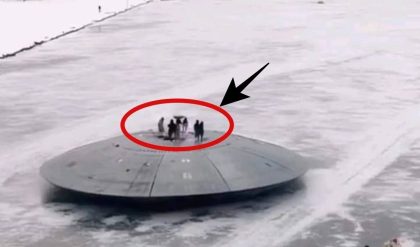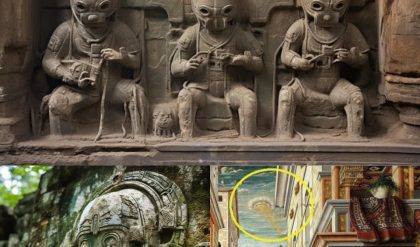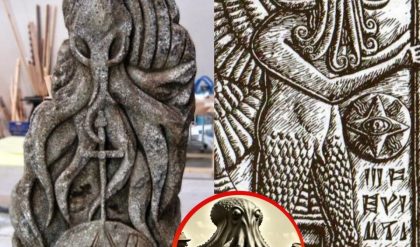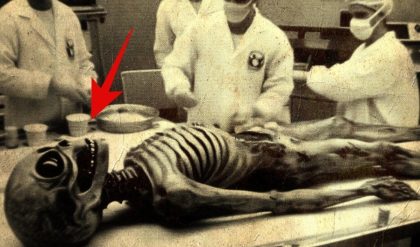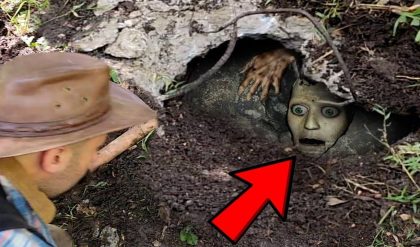Recent investigations into 16th-century textiles have revealed intriguing depictions of disc-shaped flying objects, sparking renewed interest in the possibility of ancient extraterrestrial encounters. These historical artifacts, adorned with designs resembling modern UFOs, challenge our understanding of historical records and the potential influences on early cultures.
The Discovery: What the Textiles Reveal
1. Textile Analysis


- Historical Context: The textiles in question were discovered in various historical collections and archives, dating back to the 16th century. These artifacts include tapestries, garments, and ceremonial cloths from different cultures and regions.
- Design Patterns: Upon closer examination, certain textiles feature designs resembling disc-shaped flying objects. These patterns include rounded, saucer-like shapes that appear to be hovering or in motion, often accompanied by other symbols or motifs.
2. Visual and Symbolic Interpretation
- Comparative Analysis: Researchers have compared these designs with contemporary and modern depictions of UFOs. The similarities between the ancient patterns and modern UFO imagery raise questions about possible historical accounts of extraterrestrial encounters.
- Cultural Significance: The presence of these designs in various textiles suggests that the imagery may have held symbolic or cultural significance. Understanding the cultural context of these artifacts is crucial for interpreting their meaning.

Theories and Interpretations
1. Extraterrestrial Hypothesis
- Ancient Contact: Some theorists propose that the disc-shaped objects depicted in the textiles could be evidence of ancient encounters with extraterrestrial beings. According to this hypothesis, early civilizations may have witnessed or interacted with advanced technology that influenced their artistic expressions.
- Historical Accounts: Proponents of this theory suggest that ancient texts and records describing flying objects may be linked to these textile depictions, offering potential evidence of historical UFO sightings.
2. Symbolic and Mythological Explanations
- Mythological Symbols: An alternative interpretation is that the disc-shaped designs represent mythological or symbolic elements rather than literal depictions of UFOs. In many cultures, such shapes could symbolize celestial bodies, deities, or other significant figures.
- Artistic Expression: The patterns may also reflect artistic styles or conventions of the period, with no direct connection to extraterrestrial phenomena. Researchers consider the possibility that these designs were influenced by religious or cultural themes.
Scientific and Historical Analysis
1. Fabric and Dye Analysis
- Material Examination: Experts have analyzed the materials and dyes used in the textiles to determine their authenticity and origin. This helps establish the historical accuracy of the artifacts and ensures that they have not been tampered with or misdated.
- Dating Techniques: Radiocarbon dating and other techniques are used to confirm the age of the textiles and ensure that they are indeed from the 16th century. This process helps validate the significance of the findings.

2. Historical Context and Documentation
- Cultural Research: Researchers delve into historical records, art history, and cultural studies to better understand the context of the designs. This includes examining contemporary accounts, art forms, and cultural practices that may have influenced the creation of the textiles.
- Cross-Cultural Comparisons: Comparing textiles from different regions and cultures helps identify common themes or influences, shedding light on the broader context of the designs.
Implications and Future Research
1. Reevaluating Historical Narratives
- Impact on History: If validated, the findings could prompt a reevaluation of historical narratives and the understanding of ancient civilizations’ interactions with phenomena beyond their time. This could lead to new perspectives on ancient technology and knowledge.
- Interdisciplinary Studies: The discovery may encourage interdisciplinary studies, combining archaeology, art history, and astrobiology to explore the connections between ancient artifacts and potential extraterrestrial influences.
2. Public and Academic Interest
- Increased Interest: The discovery has generated significant public and academic interest, leading to discussions and debates about the implications of the findings. Further research and analysis will be crucial for advancing understanding and clarifying the significance of the textile designs.
- Educational Outreach: Efforts to educate the public and share findings through exhibitions, publications, and media will be important for fostering informed discussions about the historical and cultural context of the artifacts.
Conclusion: A New Dimension to Ancient Mysteries
The investigation into 16th-century textiles depicting disc-shaped flying objects presents a fascinating glimpse into ancient art and symbolism. While the theories about extraterrestrial encounters offer an intriguing perspective, the findings also highlight the importance of understanding historical and cultural contexts. As research continues, the exploration of these ancient enigmas promises to deepen our knowledge of early civilizations and their representations of the unknown.
